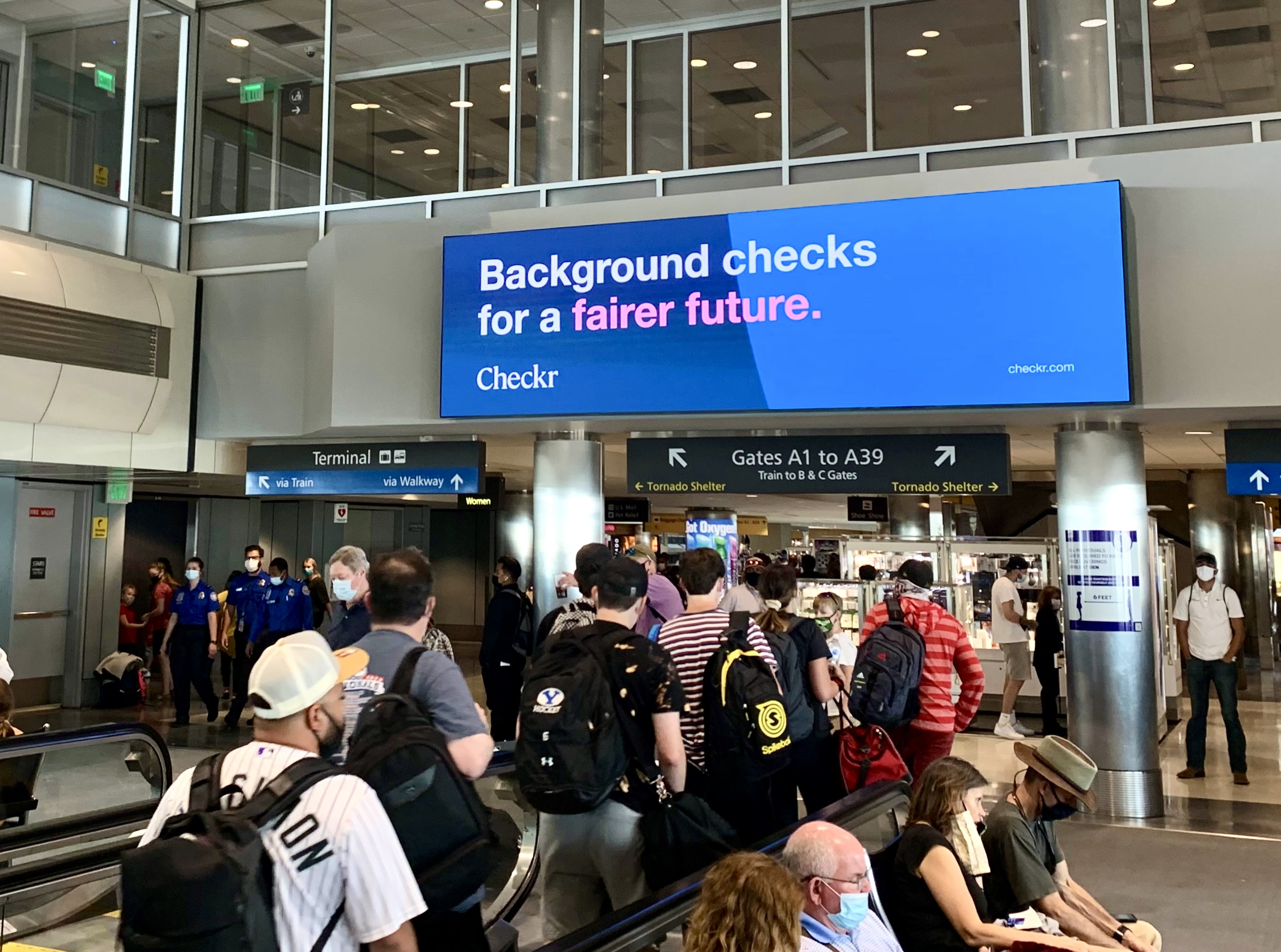
Airports are high-traffic locations that provide a captive audience of local and international travelers en route to or returning from a destination. Imagine your Out-of-Home (OOH) ads reaching your audiences when they enter the airport, as they pass through security, while waiting at the concourses, in-flight on the plane, and upon arrival at baggage claims. Airport advertising has the ability for high frequency as it can be laid along the target audience's path. In addition to high reach and frequency, audiences are often at airports for hours, which means longer dwell times for them to be exposed to, interact with, and react to your message.
Many formats are available at airports, including digital signage, large and small-scale printed banners, full video screens, and more. Advertisers have multiple opportunities to hit their audience with their message, whether it is a travel-related brand, luxury goods, or a technology company trying to entice the much-coveted business traveler.
In this article, you will learn how to maximize your reach through airport advertising, the different formats available, and why it is effective for reaching your audience.
Airports offer a wide variety of advertising options and formats. As a best practice, we recommend trying to hit your audience at least three times throughout their journey through two higher-impact large formats supplemented by a few smaller-format advertisements. Here are some of the most popular formats for airport advertising:
1. Large Format Digital Networks - On the concourse, screens display dynamic content, including videos, images, and animations. 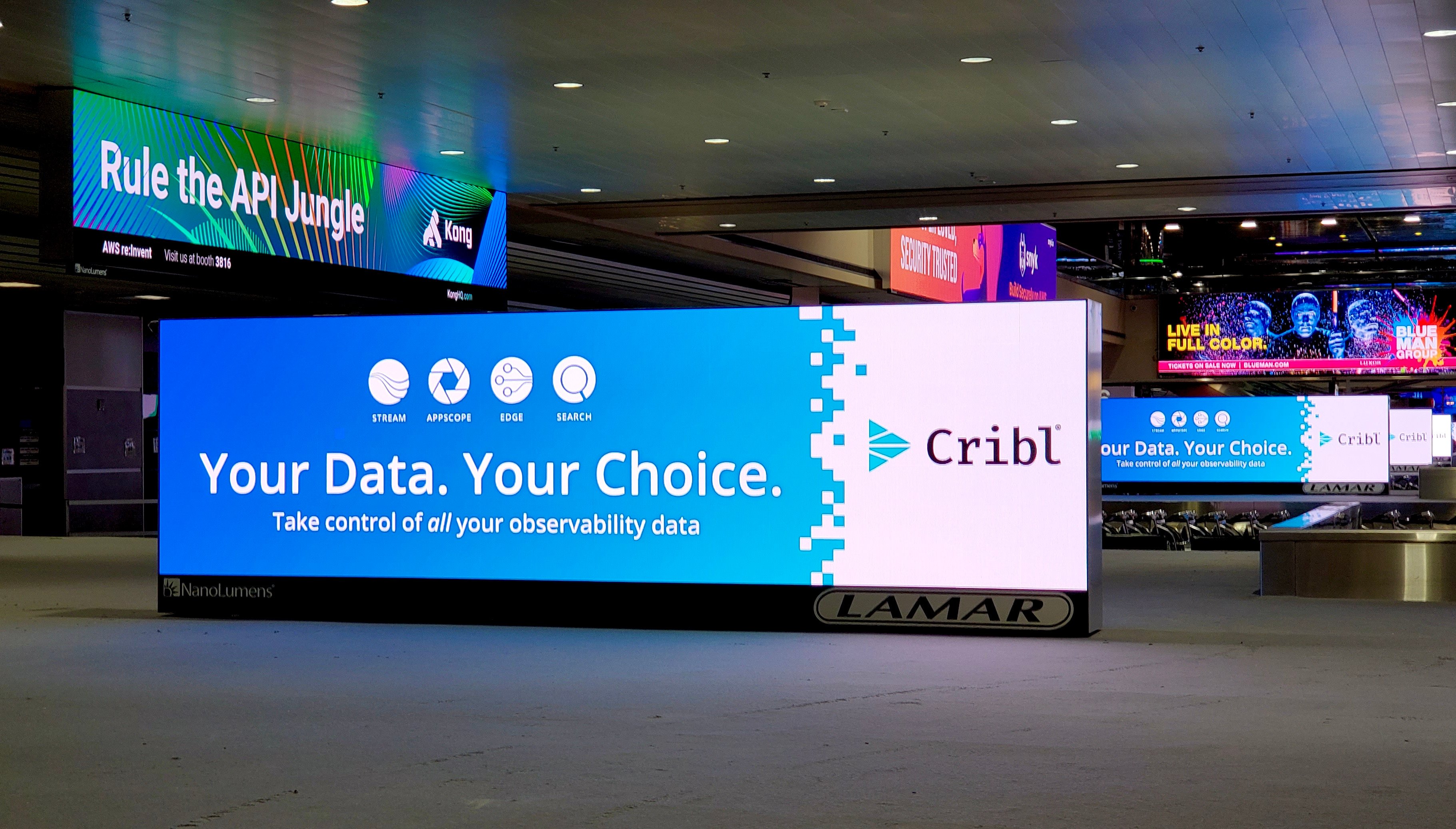 Digital Display Network.
Digital Display Network.
2. Large Format Tension Fabric Displays (TFD): Static displays made of usually backlit fabric produce a striking visual because the light flashes through the tension fabric. Tension Fabric Display.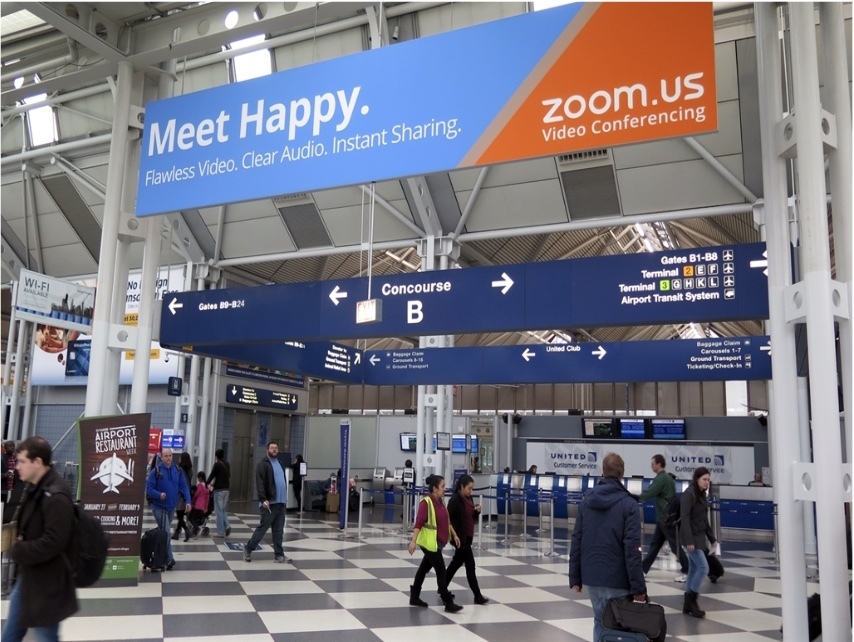 Tension Fabric Display.
Tension Fabric Display.
3. JCDecaux’s Eye-Vision Networks: While not limited to JCDecaux because airport media tends to change ownership, the large international media supplier developed these smaller screens with free charging stations. These networks typically blanket a concourse and are usually in the gate holds. 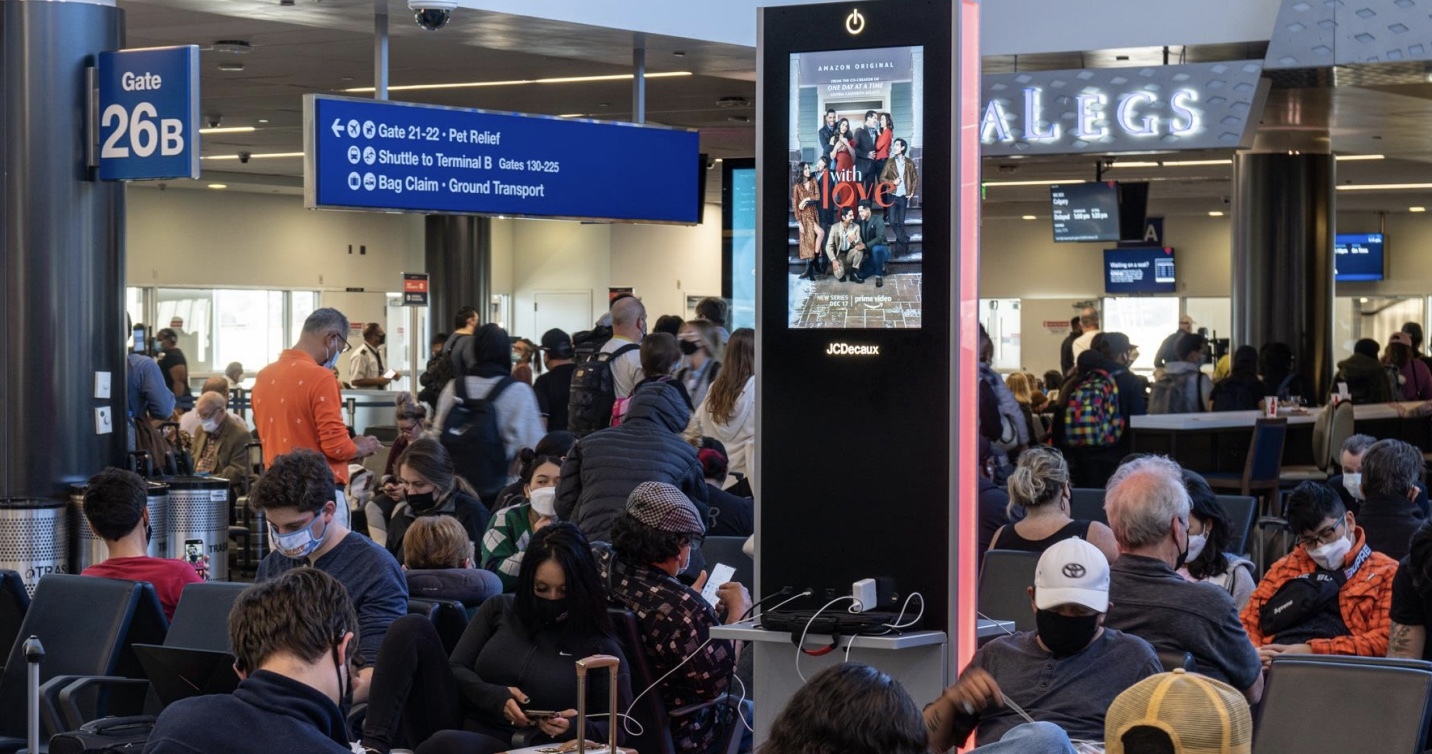 Eye-Vision Network.
Eye-Vision Network.
4. Spectaculars: Large light boxes are usually placed in the middle of large areas with heavy foot traffic. There are also mini-spectaculars that can be placed in arrival areas or concourses and other areas where passengers tend to wait. .jpeg?width=1095&height=810&name=image%20(91).jpeg) Digital Spectacular.
Digital Spectacular.
5. Dioramas: Large static images can be placed over baggage claim carousels, by security lines, or around passenger check-in. 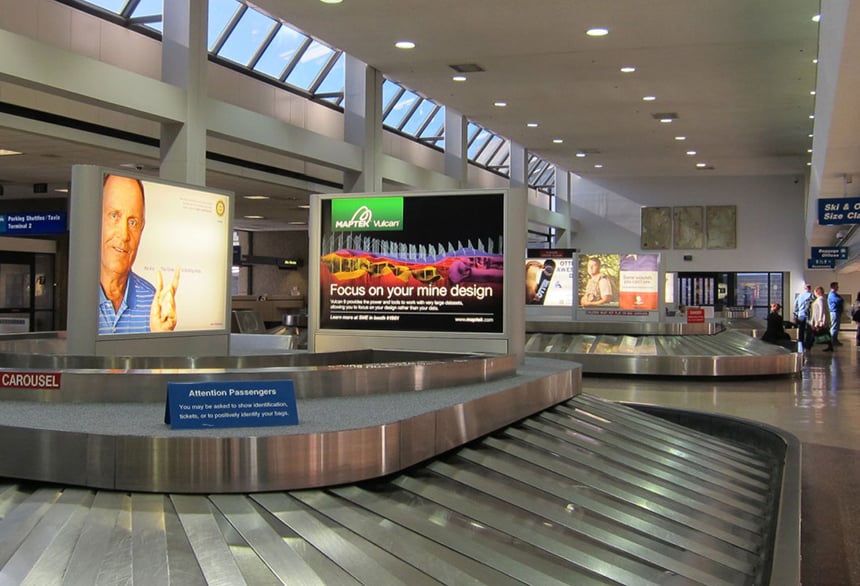 Diorama on top of baggage claim.
Diorama on top of baggage claim.
6. Static displays: A variety of formats, including Posters, Banners, and Billboards placed in high-traffic areas of the airport, often for brand awareness or to promote specific products or services. 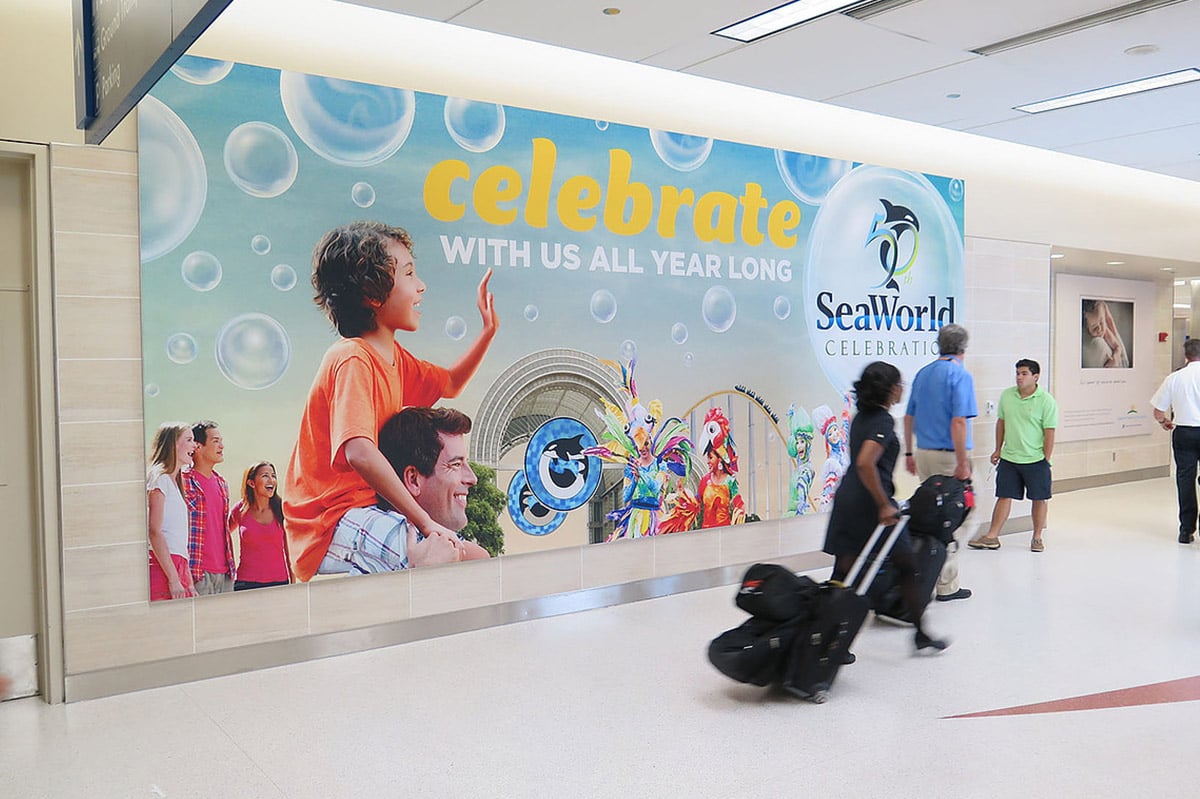 Static Tension Fabric Display.
Static Tension Fabric Display.
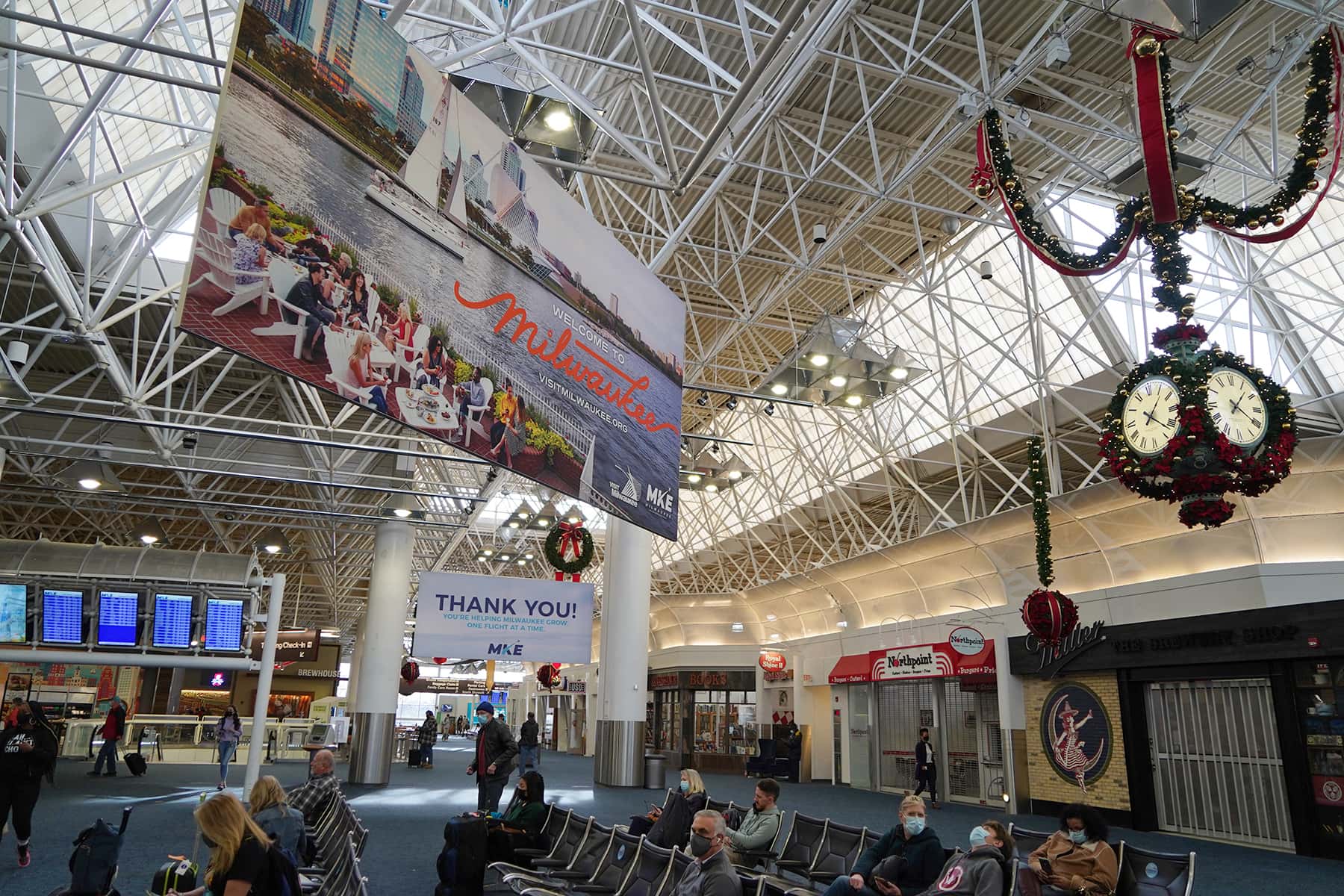 Double-sided Hanging Banner.
Double-sided Hanging Banner.
7. Digital displays: Digital screens, Video Walls, and other interactive displays that can show video, animations, or even social media feeds. They can provide real-time information about flights and airport amenities. Digital displays run on a loop that rotates through 10 advertising slots with equal airplay. If, for some reason, a unit is not sold out, advertisers receive a higher Share of Voice (SOV) and more play time for their money. .jpg?width=2429&height=1806&name=AIR_DEN_PK2VW-6_VIDEO%20WALL_CHECKR_8.2%20(2).jpg) Digital Video Wall.
Digital Video Wall.
.jpg?width=1254&height=910&name=LAX1401DV%20(6).jpg) Digital Network.
Digital Network.
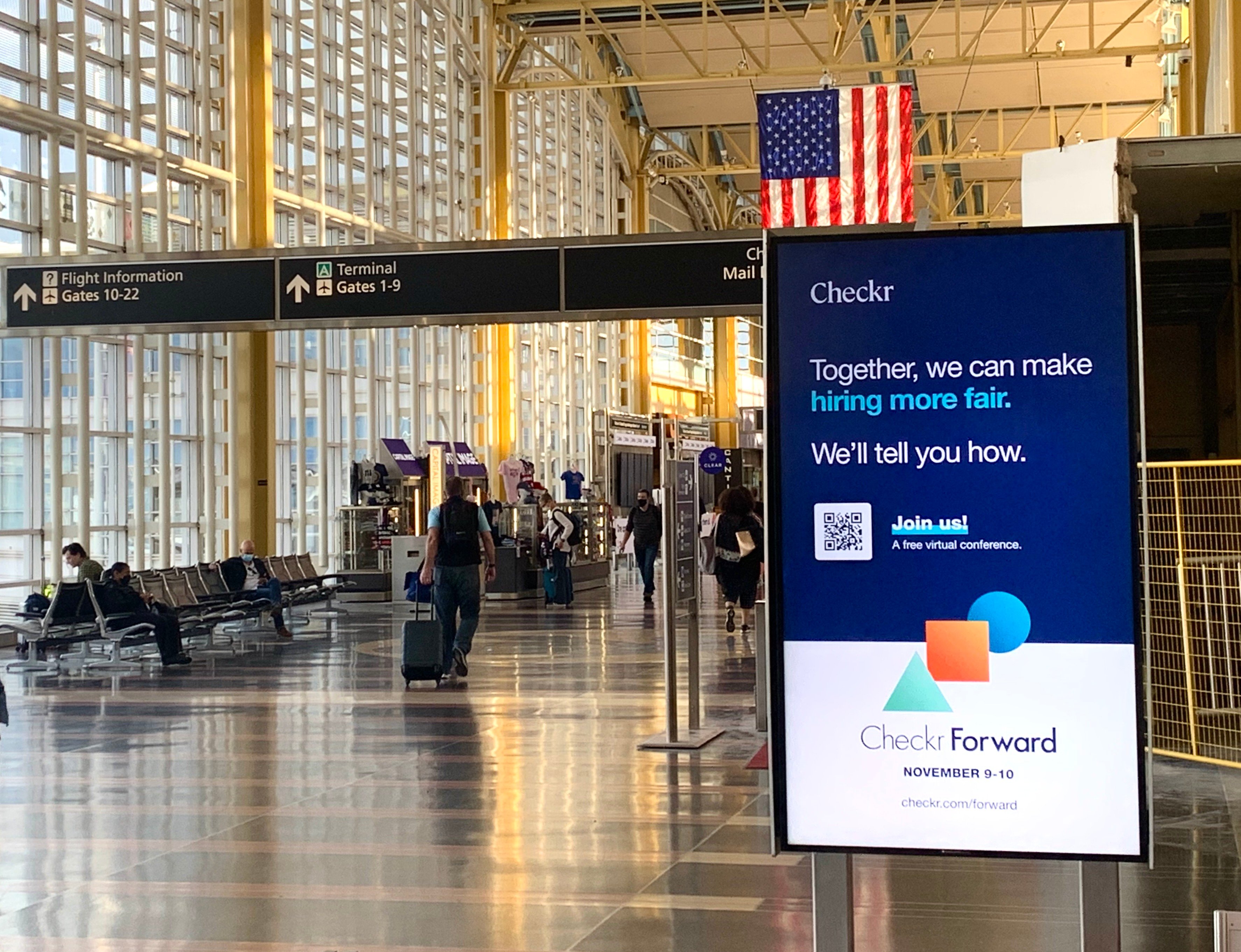 LCD Digital Screen.
LCD Digital Screen.
8. Wall Wraps: Large format graphics that cover walls or sections of walls. .jpg?width=3253&height=1925&name=Truist%20Baggage%20Claim%20Wall%20Wrap%20(3).jpg) Wall Wrap.
Wall Wrap.
9. Sponsorship: Some brands partner with an airport or airline to sponsor events or amenities. Some examples include airport lounges, free Wi-Fi, and charging stations. 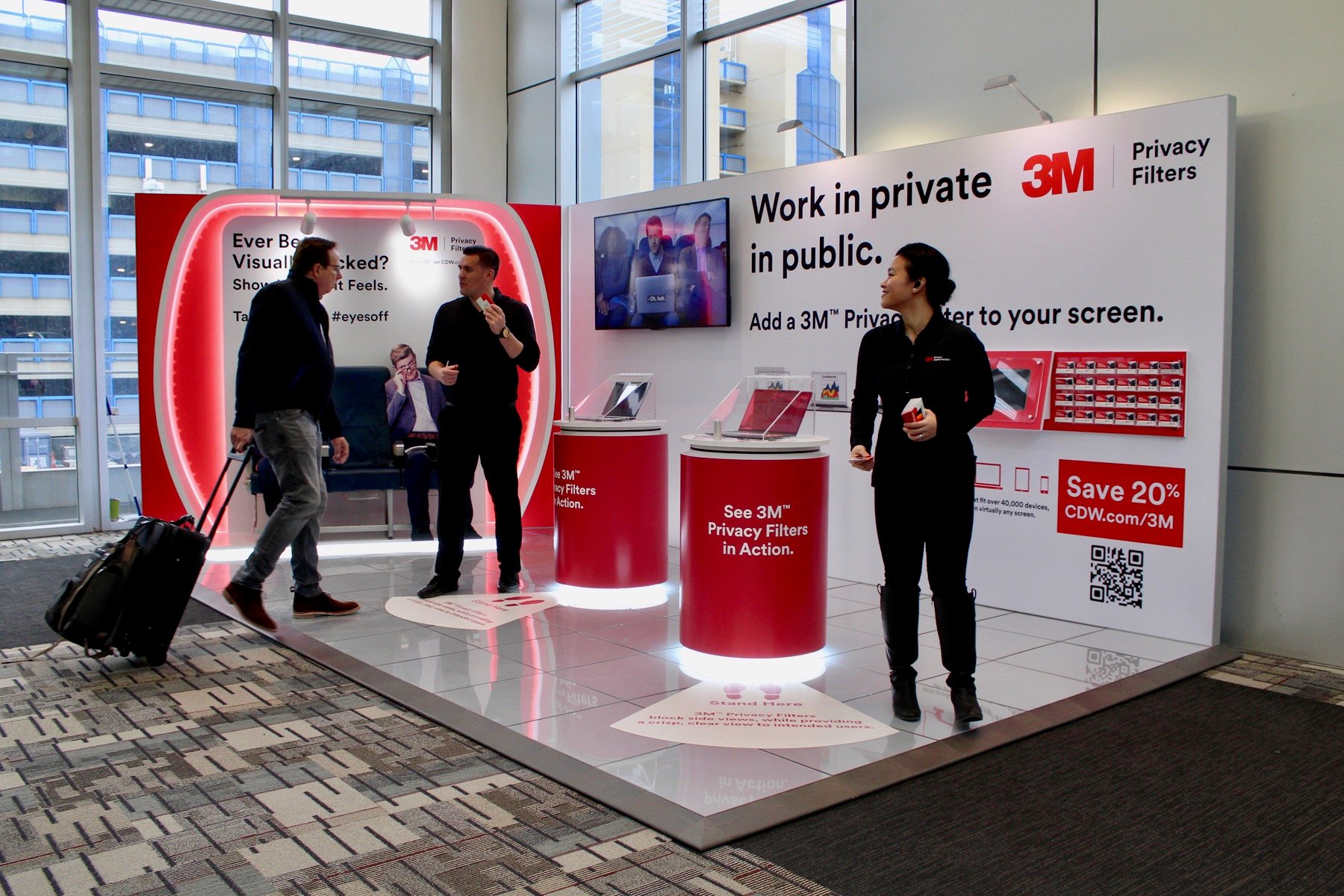 Airport activation/sponsorship.
Airport activation/sponsorship.
10. In-flight advertising: OOH advertisements placed in in-flight magazines, tray tables, or seat-back screens.
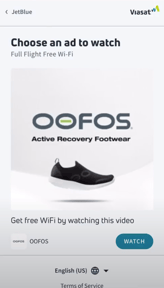
Example of in-flight ad.
Much like other forms of OOH, many factors go into the cost of airport advertising, and rates can vary widely. Some factors include the ad format, the location of the ad within the airport, and the airport itself.
Airport media owners set their rates based heavily on occupancy level. Some airports may be more expensive than others due to their size and how many passengers pass through. Airport rates also change frequently as media owners evaluate and re-evaluate their available open spots. Most airport rates are only good for about eight weeks.
Where an ad is located within an airport can also affect the cost. For large format, it often depends on what terminal it’s located in. All airports can provide percentages of passenger travel for each terminal. Prices will be higher if the terminal is home to a major hub with heavy business travel. Likewise, if the OOH unit is located in a high dwelling area containing restaurants, restrooms, and flight information displays, that can also increase the cost.
Average costs for various OOH units in airports can vary widely for a four-week campaign flight. Dioramas typically range from $1000 to $5000, whereas a single digital screen at a major international airport such as San Francisco International Airport can range from $50,000 to $90,000. Some large format digital networks with 30-50 screens can get even pricier - $150,000-$250,000 for a four-week flight.
Airport advertising can be an excellent option for advertisers wanting to reach a diverse audience. There is often an assumption that people who can afford to travel in this way tend to be more affluent, so the idea behind advertising becomes convincing them that since they are already in the airport and have spent money on their flight, what else should they consider spending their money on? This makes airports a great place for luxury goods to advertise their wares. Here are some of the top audiences for airport advertising and what categories typically target them:
Though airport advertising can be costly, it has several significant benefits for brands that want to reach a highly targeted and engaged audience. Here are some benefits of airport advertising:
Airport advertising can be very effective for brands that want to reach a targeted captive audience. But how can one know if the advertising is effective? Next, we’ll get into how airport advertising is measured.
Measuring Airport Advertising can be challenging, but it's not impossible. Regarding attribution through mobile devices, airports are similar to malls in that they are often multi-level. Additionally, airports often don’t allow marketing teams to conduct in-person brand surveys within the airport. However, there are some ways to measure the effectiveness of airport advertising:
Because measuring the effectiveness of airport advertising is difficult, it is often used to raise brand awareness. Although, even with limited measurement available, advertisers can gain valuable insights into the effectiveness of their campaigns which will help them make decisions about future marketing strategies.
Though it has many benefits, airport advertising can be challenging to do on your own. At Billups, we thoroughly research available inventory, which airlines fly out of what terminals, and analyze the airport’s traffic to get our clients the best inventory for their brand. We take care of all the details for you, leveraging our “boots on the ground” capabilities to help ensure a successful campaign. Contact us today to get started!
Don't worry—we won't share your information.